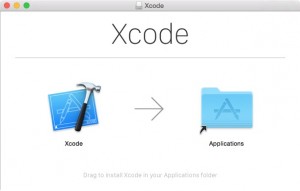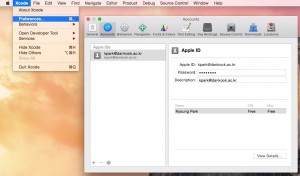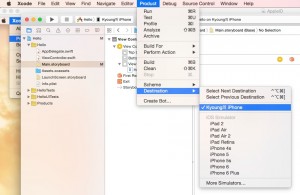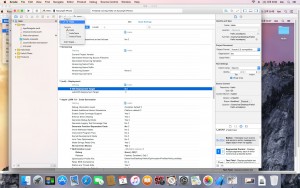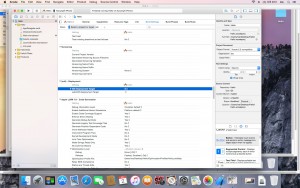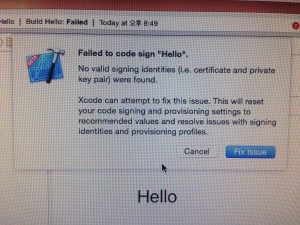//: Playground – noun: a place where people can play
// Swift2 string blog
// https://developer.apple.com/swift/blog/?id=30
// Kyoung Shin Park (2016 Fall)
import Cocoa
var letters: [Character] = [“c”, “a”, “f”, “e”]
var cafe = String(letters)
print(letters.count)
print(cafe)
print(cafe.characters.count)
// print char of string “cafe”
for c in cafe.characters {
print(c)
}
let acuteAccent : Character = “\u{0301}”
cafe.append(acuteAccent)
print(cafe)
print(cafe.characters.count)
print(cafe.characters.last!)
cafe.characters.contains(“e”)
cafe.characters.contains(“´”)
cafe.characters.contains(“é”)
// In Swift, strings are considered equal regardless of whether they are constructed from decomposed or precomposed character sequences:
let decomposed = “\u{1100}\u{1161}” // ᄀ + ᅡ
let precomposed = “\u{AC00}” // 가
decomposed == precomposed // true
let string1 = “”
var string2: NSString = “Hello”
switch (string2) {
case let string2 as NSString:
print(“string2 is NSString”)
case let string2 as String:
print(“string2 is String”)
default:
print(“None of those”)
}
var len = string2.length
var string3 = String(“Hello”)
string3 += ” World”
string3.append(Character(“!”))
var string4 = String(count: 7, repeatedValue: Character(“A”))
var string5 = NSString()
var string9 = NSString(string: “Hello”)
var string6 = NSMutableString(capacity: 10)
var total = 100
var string7 = “\(string3)! total=\(total)”
var string8: NSString = string7
//var string10: String = string3.stringByAppendingFormat(” append %@”, total)
//print(string10)
string5 = string2.stringByAppendingFormat(” append %@”, string8)
print(string8)
print(string8.description)
var str = “Hello”
var world = ” World”
var smile = “?”
var mark = “!~”
var combined = str + mark
var combined2 = (str + world).stringByAppendingString(smile)
var len2 = combined2.characters.count
// length
var length = combined.characters.count
var len3 = combined.startIndex.distanceTo(combined.endIndex)
var len4 = (combined as NSString).length
// print char of string
for char in combined.characters {
print(char)
}
print(combined2.lowercaseString)
print(combined2.uppercaseString)
print(combined2.capitalizedString)
if let range = combined.rangeOfString(“ello”) { // contains
print(“ello”)
}
else {
print(“none”)
}
var trail = combined.substringWithRange(Range<String.Index>(start: str.endIndex, end: combined.endIndex))
print(“combined = \(combined)”)
let startIndex = combined.startIndex.advancedBy(2)
let endIndex = combined.startIndex.advancedBy(5)
//combined.insert(“^”, atIndex: combined.endIndex)
//let question : Character = “?”
//combined.append(question)
//print(combined)
combined.insert(“a”, atIndex: startIndex)
combined.insertContentsOf(“bc”.characters, at: startIndex.successor())
combined.removeAtIndex(combined.endIndex.predecessor())
print(combined)
let substring = combined[startIndex..<endIndex]
print(“substring = \(substring)”)
var sub2 = combined.substringWithRange(Range<String.Index>(start: startIndex, end: endIndex))
print(sub2)
var myString = “Seoul, New York, Tokyo LA”
var myArray = myString.componentsSeparatedByString(“,”)
for s in myArray {
print(s)
}
var myArray2 = myString.componentsSeparatedByCharactersInSet(NSCharacterSet(charactersInString: “, “))
for s in myArray2 {
print(s)
}
var num = “56.25”
if let range = num.rangeOfString(“.”) {
let wholeNum = num[num.startIndex..<range.startIndex]
print(“wholeNum=\(wholeNum)”)
num.replaceRange(num.startIndex..<range.startIndex, with: “32”)
print(“num=\(num)”)
num.removeRange(num.startIndex..<range.startIndex)
print(“num2=\(num)”)
}
let animals = [“Giraffe”, “Cow”, “Dog”, “Cat”]
//animals.append(“Bird”)
var animal = animals[2]
for (index, value) in animals.enumerate() {
print(“animals[\(index)]=\(value)”)
}
